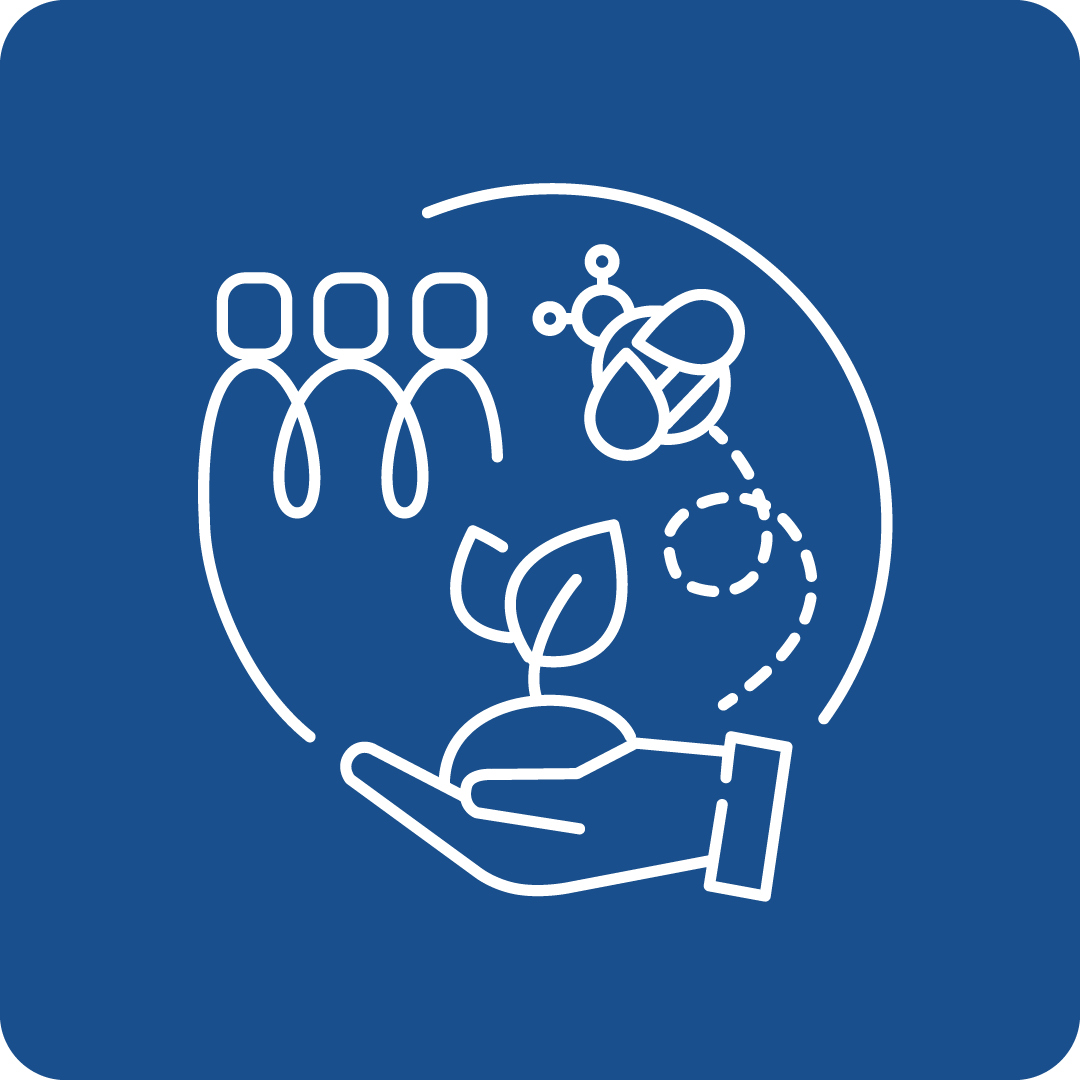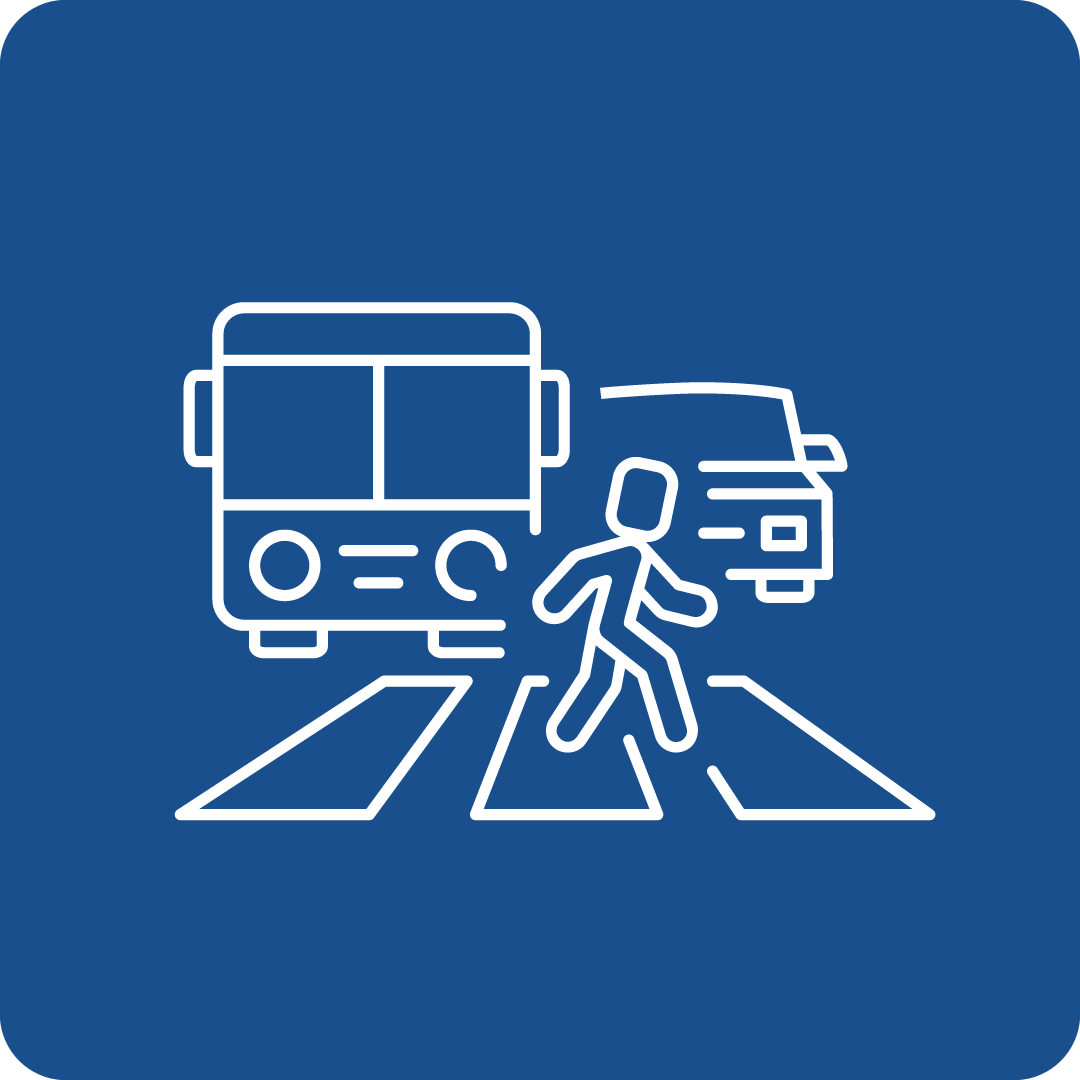Filter Search for grants
Call Navigation
Deadline expired
The deadline for this call has expired.
Call key data
Increasing walking and cycling: to reap health benefits, emission reductions and integrate active mobility and micro-mobility devices, with smart technologies and infrastructure
Funding Program
Horizon Europe: Missions
Call number
HORIZON-MISS-2025-06-CIT-CANCER-01
deadlines
Opening
06.05.2025
Deadline
04.09.2025 17:00
Funding rate
70%
Call budget
€ 12,000,000.00
Estimated EU contribution per project
€ 6,000,000.00
Link to the call
Link to the submission
Call content
short description
Proposals should aim to enhance walking and cycling safety and accessibility, integrate them with transport systems, use smart technologies, and involve various stakeholders for effective implementation and training.
Call objectives
Mobility and transport are key components in every citizen’s life, especially in cities, regardless of their size and population density. However, transport is still a significant source of greenhouse gas emissions, air, noise, soil and water pollution. Congestion and scarcity of public space remain serious challenges to the efficiency of transport systems and reduce the liveability of affected areas at a considerable cost to society and the economy.
Active mobility modes, such as walking and cycling, represent a sustainable and healthy means of mobility, with considerable potential to support the decarbonisation of urban transport and help achieve the EU-wide target of reducing net greenhouse gas emissions by at least 55% by 2030, compared to 1990, and climate neutrality by 2050 in line with the European Climate Law.
According to the WHO, physical inactivity, overweight and obesity are linked to many types of cancer: regular physical activity, maintaining both a healthy body weight and diet can reduce the risk. Similarly, air pollution has been linked to several malignancies, especially lung cancer: an increase in the uptake of cycling and walking is a promising, low-cost, and equitable route to more physical activity, thus reducing the risk of cancer. Engaging patients in physical activity during or after cancer treatment can assist in recovery, reduce the incidence of second cancers and other chronic diseases, and improve survival, thus improving their quality of life.
With the increase in numbers of active mobility users as well as the increasing use of micro-mobility devices, improvements towards high-quality infrastructure, effective planning and preparation are required. This includes the preparation of cycling and walking infrastructure network plans, raising standards in design guidance documents, linking cycling and walking with other modes of transport, in particular public transport, and improvements in how the transport system and traffic flows are managed.
While cars are becoming more (inter-)connected, more work is needed to test how to bring e-bikes, e-scooters and micro-mobility devices, into the design of “smart” infrastructure through the measures of digitalization and connectivity of vehicles and infrastructure in the intelligent transport systems. Connected mobility / Cooperative Intelligent Transport Systems (C-ITS) are being developed but other road users of (e-)bicycles and e-scooters are yet to be integrated. Although some European cities have already tested use cases of bicycles in intelligent transport systems sector, more efforts are needed to extend the work on C-ITS to them. Additional efforts should lead to increased safety via the digital road infrastructure and an increase in their modal share.
Proposals are therefore expected to address all of the following:
1) improve the quality, safety, quantity, accessibility, continuity and attractiveness of walking and cycling infrastructure by:
- Providing an updated state of the art of the uptake of walking and cycling policies, programmes and projects in urban, transport, research, and health strategies and plans as well as of their socio-economic, environmental and health benefits resulting from their demonstrated potential in emission reduction.
- Preparing cycling and walking infrastructure network plans which foster multimodality by linking cycling and walking with other modes of transport, in particular public transport, and by improving network and traffic flow management.
- Develop case studies and identify best practices particularly focused on quality, safety, quantity, accessibility, continuity and attractiveness of walking/pedestrian and cycling infrastructure.
2) improve integration and modal share of active mobility:
- Developing a case study to identify how walking and cycling can help to improve symptoms and quality of life of cancer patients.
- Looking at the integration of walking and cycling policies and projects in urban development, transport-research and health strategies and plans through a comparative analysis across at least 10 EU cities, selected by taking into account geographical balance, size and population as well as different levels in the uptake of active mobility.
- Demonstrating in new and/or existing living labs innovative solutions to increase the modal share of active mobility, including through testing tactical urbanism measures in real-life urban spaces.
- Test behavioural change regarding the uptake of walking and cycling among different populations through implementation research. Identify and address specific bottlenecks and barriers that prevent the uptake of behavioural change.
- Fostering the exchange of knowledge, experience and best practices about the implementation and upscale of innovative solutions for walking and cycling that could be replicated and upscaled among cities.
- Supporting the development of local, regional and national active mobility policies, and their implementation across cities participating in the action, leading at least to a 30% increase in the modal share of walking and cycling within follower cities and thus contributing to the implementation of related EU policies and in particular of the European Declaration on Cycling.
3) use smart technologies and integration in traffic management systems/traffic light management at local/regional/national level, including in the new “smart” infrastructure:
- Exploring conditions and infrastructure requirements for the integration of e-bikes and micro-mobility devices in traffic management systems/traffic light management.
- Identifying and testing use cases to extend connected vehicles technology (C-ITS) to cycling, micro-mobility, bike sharing etc. to enhance the contribution of these transport modes to a sustainable urban mobility system.
- Exploring conditions for a wider uptake of smart technologies in the cycling/micromobility sector taking into account the latest legislative developments and building on results from previous European R&I projects.
4) coordination/exchange/capacity building for increasing the uptake of active mobility by:
- Supporting further coordination, exchange of experience and best practices, including training and capacity building activities, as well as co-creation and citizens engagement activities, taking into account the different levels of experience and development of walking and cycling strategies across Europe.
- Involve a variety of actors, including e.g. local/regional/national transport, research and health authorities, cancer charities, academia, public transport authorities and operators, urban mobility practitioners, shared mobility service providers, citizen associations, stakeholder organisations, and industry associations and representatives.
The topic requires proposals from consortia that include at least five ‘lead cities’ and five ‘follower cities’, each established in a different Member State or Associated Country, reflecting a sound geographical balance. The consortia should bring together local authorities and other relevant stakeholders to jointly test and implement packages of technological and non-technological innovations and policy-based measures.
This topic requires the effective contribution of social sciences and humanities (SSH) disciplines and the involvement of SSH experts, institutions as well as the inclusion of relevant SSH expertise, in order to produce meaningful and significant effects enhancing the societal impact of the related research activities.
Projects selected through this topic will contribute to the implementation of EU policies and strategies fostering sustainable urban mobility such as the European Green Deal, Sustainable and Smart Mobility Strategy, New Urban Mobility Framework, Recommendation on national SUMP support programme and in particular active mobility, including the EU Declaration on Cycling, as well as contributing to the implementation of the Mission on Cancer and Europe's Beating Cancer Plan in particular promoting active mobility as effective mean of cancer and obesity prevention and to the implementation of the Zero Pollution Action Plan, its targets for 2030 and the relevant Flagship Initiatives, in particular the reduction by more than 55% the health impacts (premature deaths) of air pollution and by 30% the share of people chronically disturbed by transport noise, with numerous co-benefits in other areas.
Proposals should plan for an active collaboration amongst the projects selected under this topic - for dissemination, evaluation and coordination - facilitated by and within the CIVITAS initiative through the signature of a Memorandum of Understanding. Proposals should ensure that appropriate provisions for activities and resources aimed at enforcing this collaboration are included in the work-plan. Detailed description of the specific activities and common actions that will be undertaken is not required at proposal stage and can be further defined during the grant agreement phase. Collaboration with the Mission Platform (HORIZON-MISS-2021-CIT-02-03) is essential and should take place through the CIVITAS initiative. The latter should establish, through a collaboration agreement, clear links with the Mission portfolio for synergies and complementarities. The Commission will facilitate Mission-specific coordination through future actions, notably fostering exchanges with other proposals. Hence, successful applicants will be asked to join the ‘Prevention’ cluster for the Mission on Cancer, established in 2022. In this regard, the Commission will take on the role of facilitator, including with relevant initiatives and stakeholders, if appropriate. Collaboration with the Driving Urban Transitions (DUT) partnership is recommended.
Proposals should take stock of existing work developed in relevant EU and/or national projects, build on the results of existing studies. In order to ensure complementarity in particular on road safety related aspects, projects awarded under this topic will be invited to liaise and collaborate with the projects that will be selected under topic Horizon-2025-D6-12 “Safety of Cyclists, Pedestrians and Users of other Micro-mobility Devices”.
read more
Expected results
Projects are expected to contribute to all the following outcomes:
- Cities advance in achieving their climate neutrality targets and reducing greenhouse gas emissions from transport by at least 15%, by promoting and implementing walking and cycling and by incorporating walking, cycling and micro-mobility infrastructure and services (e.g. bicycles, e-bikes and e-scooters) in multimodal transport networks;
- Increased modal share of walking and cycling in follower cities, in particular increased number of daily trips on foot and by bike, by at least 30%;
- Increased integration of (e)bikes and -e-scooters (and other “intelligent” micromobility vehicles) through the digital and green road infrastructure by extending the work on Cooperative Intelligent Transport Systems (C-ITS) to them in order to increase their modal share as well as their safety;
- As a feedback to EU research, health and transport policy, a comprehensive EU guidance on increasing (1) walking, (2) cycling, and (3) micro-mobility in cities is developed, including:
- concrete measures for improving the quality, safety, quantity, continuity and attractiveness of pedestrian/walking and cycling infrastructure;
- improved integration of walking, cycling and micro-mobility in transport models and traffic management urban systems/traffic light management at local/regional/national level;
- concrete measures for industry and city planners to use smart technologies to bring about healthy behavioural change for getting more people into active modes of transport;
- support and guidance for urban transport authorities to establish partnerships with the relevant local/regional/national health authorities to promote active mobility projects and solutions that demonstrate quantified health benefits for the city population. In particular through implementation research on cancer prevention by increasing physical activity and reducing obesity and how walking and cycling can improve symptoms and side effects of cancer patients.
The expected outcomes should be supported by clear indicators with baselines and quantified targets which are monitored for each city. The expected outcomes should take into account expected technological and policy developments.
read more
Eligibility Criteria
Regions / countries for funding
Moldova (Moldova), Albania (Shqipëria), Armenia (Հայաստան), Azerbaijan (Azərbaycan), Bosnia and Herzegovina (Bosna i Hercegovina / Босна и Херцеговина), Canada, Faeroes (Føroyar / Færøerne), Georgia (საქართველო), Iceland (Ísland), Israel (ישראל / إِسْرَائِيل), Kosovo (Kosova/Kosovë / Косово), Montenegro (Црна Гора), Morocco (المغرب), New Zealand (Aotearoa), North Macedonia (Северна Македонија), Norway (Norge), Serbia (Srbija/Сpбија), Tunisia (تونس /Tūnis), Türkiye, Ukraine (Україна), United Kingdom
eligible entities
EU Body, Education and training institution, Non-Profit Organisation (NPO) / Non-Governmental Organisation (NGO), Other, Private institution, incl. private company (private for profit), Public Body (national, regional and local; incl. EGTCs), Research Institution incl. University, Small and medium-sized enterprise (SME)
Mandatory partnership
Yes
Project Partnership
To be eligible for funding, applicants must be established in one of the following countries:
- the Member States of the European Union, including their outermost regions
- the Overseas Countries and Territories (OCTs) linked to the Member States
- countries associated to Horizon Europe - see list of particpating countries
Only legal entities forming a consortium are eligible to participate in actions provided that the consortium includes, as beneficiaries, three legal entities independent from each other and each established in a different country as follows:
- at least one independent legal entity established in a Member State; and
- at least two other independent legal entities, each established in different Member States or Associated Countries.
Any legal entity, regardless of its place of establishment, including legal entities from non-associated third countries or international organisations (including international European research organisations) is eligible to participate (whether it is eligible for funding or not), provided that the conditions laid down in the Horizon Europe Regulation have been met, along with any other conditions laid down in the specific call topic.
A ‘legal entity’ means any natural or legal person created and recognised as such under national law, EU law or international law, which has legal personality and which may, acting in its own name, exercise rights and be subject to obligations, or an entity without legal personality.
Specific cases:
- Affiliated entities (i.e. entities with a legal or capital link to a beneficiary which participate in the action with similar rights and obligations to the beneficiaries, but which do not sign the grant agreement and therefore do not become beneficiaries themselves) are allowed, if they are eligible for participation and funding.
- Associated partners (i.e. entities which participate in the action without signing the grant agreement, and without the right to charge costs or claim contributions) are allowed, subject to any conditions regarding associated partners set out in the specific call conditions.
- Entities which do not have legal personality under their national law may exceptionally participate, provided that their representatives have the capacity to undertake legal obligations on their behalf, and offer guarantees to protect the EU’s financial interests equivalent to those offered by legal persons.
- Legal entities created under EU law (EU bodies) including decentralised agencies may be part of the consortium, unless provided for otherwise in their basic act.
- International European research organisations are eligible to receive funding. International organisations with headquarters in a Member State or Associated Country are eligible to receive funding for ‘Training and mobility’ actions or when provided for in the specific call/topic conditions. Other international organisations are not eligible to receive funding, unless provided for in the specific call/topic conditions, or if their participation is considered essential for implementing the action by the granting authority.
- Joint Research Centre (JRC)— Where provided for in the specific call conditions, applicants may include in their proposals the possible contribution of the JRC but the JRC will not participate in the preparation and submission of the proposal. Applicants will indicate the contribution that the JRC could bring to the project based on the scope of the topic text. After the evaluation process, the JRC and the consortium selected for funding may come to an agreement on the specific terms of the participation of the JRC. If an agreement is found, the JRC may accede to the grant agreement as beneficiary requesting zero funding or participate as an associated partner, and would accede to the consortium as a member.
- Associations and interest groupings — Entities composed of members (e.g. European research infrastructure consortia (ERICs)) may participate as ‘sole beneficiaries’ or ‘beneficiaries without legal personality’. However, if the action is in practice implemented by the individual members, those members should also participate (either as beneficiaries or as affiliated entities, otherwise their costs will NOT be eligible.
- EU restrictive measures — Entities subject to EU restrictive measures under Article 29 of the Treaty on the European Union (TEU) and Article 215 of the Treaty on the Functioning of the EU (TFEU) as well as Article 75 TFEU, are not eligible to participate in any capacity, including as beneficiaries, affiliated entities, associated partners, third parties giving in-kind contributions, subcontractors or recipients of financial support to third parties (if any).
- Legal entities established in Russia, Belarus, or in non-government controlled territories of Ukraine — Given the illegal invasion of Ukraine by Russia and the involvement of Belarus, there is currently no appropriate context allowing the implementation of the actions foreseen in this programme with legal entities established in Russia, Belarus, or in non-government controlled territories of Ukraine. Therefore, even where such entities are not subject to EU restrictive measures, such legal entities are not eligible to participate in any capacity. This includes participation as beneficiaries, affiliated entities, associated partners, third parties giving in-kind contributions, subcontractors or recipients of financial support to third parties (if any). Exceptions may be granted on a case-by-case basis for justified reasons.
With specific regard to measures addressed to Russia, following the adoption of the Council Regulation (EU) 2024/1745 of 24 June 2024 (amending Council Regulation (EU) No 833/2014 of 31 July 2014) concerning restrictive measures in view of Russia’s actions destabilising the situation in Ukraine, legal entities established outside Russia but whose proprietary rights are directly or indirectly owned for more than 50% by a legal person, entity or body established in Russia are also not eligible to participate in any capacity. - Measures for the protection of the Union budget against breaches of the principles of the rule of law in Hungary — Following the Council Implementing Decision (EU) 2022/2506, as of 16 December 2022, no legal commitments can be entered into with Hungarian public interest trusts established under the Hungarian Act IX of 2021 or any entity they maintain. Affected entities may continue to apply to calls for proposals and can participate without receiving EU funding, as associated partners, if allowed by the call conditions. However, as long as the Council measures are not lifted, such entities are not eligible to participate in any funded role (beneficiaries, affiliated entities, subcontractors, recipients of financial support to third parties, etc.).In case of multi-beneficiary grant calls, applicants will be invited to remove or replace that entity in any funded role and/or to change its status into associated partner. Tasks and budget may be redistributed accordingly.
other eligibility criteria
Attention: For this call, at least five legal entities which are ‘lead cities’ and five legal entities which are ‘follower cities’ must participate, as beneficiaries, each established in a different Member State or Associated Country. In addition, at least half of the ‘lead and follower’ city beneficiaries must be among the cities selected for the EU Mission on Climate-neutral and Smart Cities.
If projects use satellite-based earth observation, positioning, navigation and/or related timing data and services, beneficiaries must make use of Copernicus and/or Galileo/EGNOS (other data and services may additionally be used).
Activities are expected to achieve TRL 7-8 by the end of the project.
Grants awarded under this topic will be linked to the following action(s): HORIZON-MISS-2021-CIT-02-03
Collaboration with the Cities Mission Platform is essential and projects must ensure that appropriate provisions for activities and resources aimed at enforcing this collaboration are included in the work plan of the proposal. The collaboration with the Mission Platform must be formalized through a Memorandum of Understanding to be concluded as soon as possible after the project starting date.
In grants awarded under this topic, eligible costs for major infrastructure works related to the deployment/instalment of the walking and cycling solutions should not constitute more than 20% of the total eligible costs. Beneficiaries’ own resources and/or mobilisation and leverage of additional investments from other EU programs and initiatives (such as EU Structural and Investment Funds) and/or other sources, private or public, could make up the remaining investment costs to secure the economic and financial sustainability of the project.
Additional information
Topics
Relevance for EU Macro-Region
EUSAIR - EU Strategy for the Adriatic and Ionian Region, EUSALP - EU Strategy for the Alpine Space, EUSBSR - EU Strategy for the Baltic Sea Region, EUSDR - EU Strategy for the Danube Region
UN Sustainable Development Goals (UN-SDGs)
![]()
![]()
![]()
![]()
Additional Information
Applications must be submitted electronically via the Funders & Tenders Portal electronic submission system (accessible via the topic page in the Search Funding & Tenders section). Paper submissions are NOT possible.
Applications must be submitted using the forms provided inside the electronic submission system (not the templates available on the topic page, which are only for information). The structure and presentation must correspond to the instructions given in the forms.
Applications must be complete and contain all parts and mandatory annexes and supporting documents.
The application form will have two parts:
- Part A (to be filled in directly online) contains administrative information about the applicant organisations (future coordinator and beneficiaries and affiliated entities), the summarised budget for the proposal and call-specific questions;
- Part B (to be downloaded from the Portal submission system, completed and then assembled and re-uploaded as a PDF in the system) contains the technical description of the project.
Annexes and supporting documents will be directly available in the submission system and must be uploaded as PDF files (or other formats allowed by the system).
The limit for a full application (Part B) is 50 pages.
Eligible costs will take the form of a lump sum.
Call documents
Horizon Europe Work Programme 2025 - MissionsHorizon Europe Work Programme 2025 - Missions(1773kB)
Contact
Website
EU Missions in Horizon Europe
RTD-HORIZON-EUROPE-MISSIONS@ec.europa.eu
Website
To see more information about this call, you can register for free here
or log in with an existing account.
Log in
Register now



